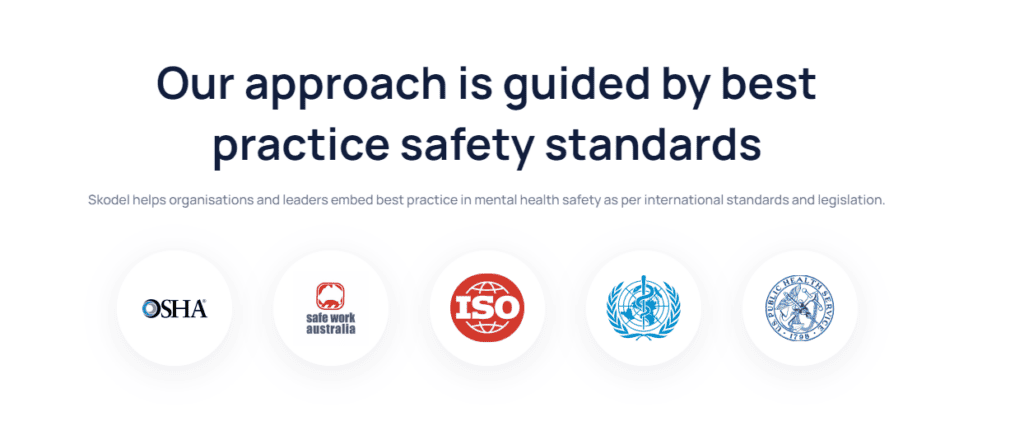Earlier this month, a company called Skodel received support on some LinkedIn posts in relation to workplace mental health. Its website says the company has
“….a focus on developing a safe outlet for people to share mental wellbeing concerns and get linked to support.”
At the end of the company’s homepage was this image:

The inclusion of the Safe Work Australia (SWA) logo, in particular, seemed odd as I have never seen it on non-SWA websites previously.







